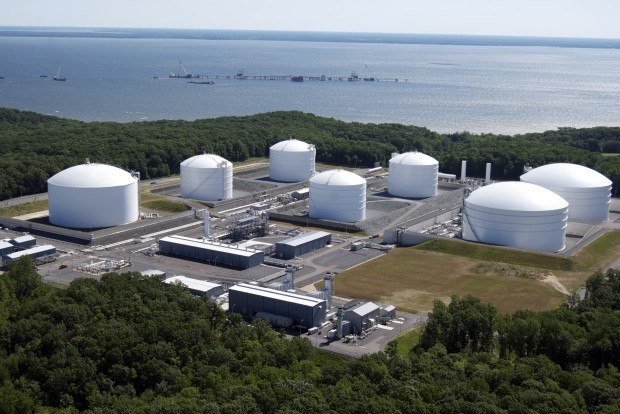Natural gas production to make U.S. a net energy exporter

Dominion Resources
The U.S. is expected to become a net energy exporter within the next 10 years. This photo shows Dominion Resources Cove Point terminal in Maryland. It is currently being converted from a gas import facility to an export terminal to ship Marcellus Shale gas to Asia.
Within the next decade, the U.S. could be exporting more energy than it imports, something that has not occurred since the early 1950’s. The Energy Information Administration projects that under a number of different scenarios, exports of natural gas will increase as petroleum liquid imports decrease, making the country an energy exporter by 2026.
The U.S. typically imports crude oil, and exports products like diesel and gasoline. An export ban on crude oil was lifted in 2015, while new liquefied natural gas (LNG) export terminals began shipping gas overseas in 2016. Additional LNG terminals are planned within the next several years, including one in Lusby, Maryland, which will be converting Marcellus Shale gas to LNG for export. Operated by Dominion Resources, the Cove Point terminal is scheduled for completion at the end of 2017.
The U.S. is a net exporter of coal, but the EIA does not project those to increase.
The projections show that energy-related CO2 emissions will continue to go down, but at a much smaller rate than in the past. Between 2016 and 2040, reductions in CO2 releases are expected to be 0.2% annually as compared to an average of 1.4% between 2005 and 2016. While electricity plants will emit less carbon as they continue to switch from coal to natural gas and renewables, the EIA projects growth in the chemical industry will add to energy sector’s greenhouse gas emissions.
The agency was less certain about the production activity for shale gas and shale oil.
“Projections of tight oil and shale gas production are uncertain because large portions of the known formations have relatively little or no production history, and extraction technologies and practices continue to evolve rapidly. Continued high rates of drilling technology improvement could increase well productivity and reduce drilling, completion, and production costs.”
The Energy Information Administration, a division of the Department of Energy, publishes the Annual Energy Outlook each year, which employs models with differing assumptions of future macroeconomic growth, global oil prices, technological developments and energy policies.
















